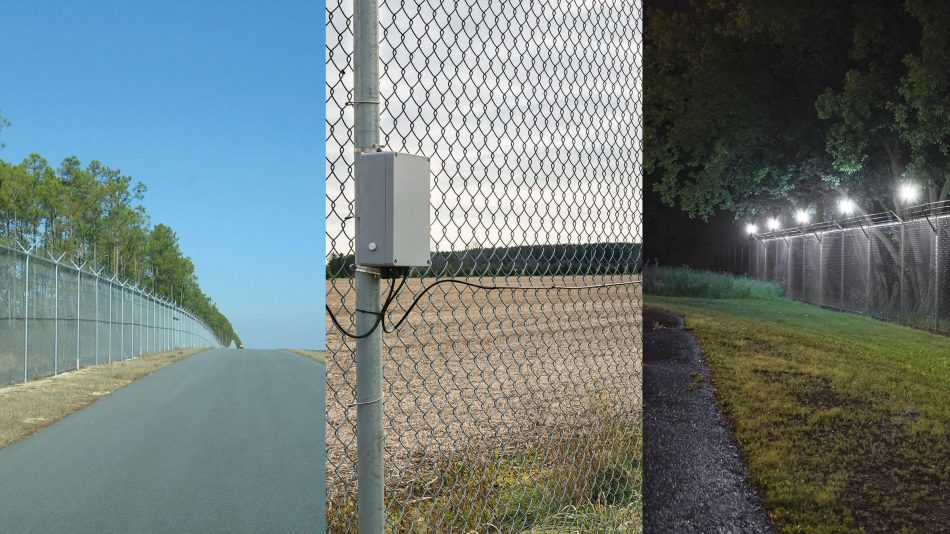How a Fiber Security System Provides Superior Dependability and Performance in Security Monitoring
How a Fiber Security System Provides Superior Dependability and Performance in Security Monitoring
Blog Article
The Ultimate Guide to Fiber Optic Safety Solutions for Your Service
In an age where security problems are extremely important for businesses, recognizing the details of fiber optic innovation can be transformative. This overview lays out just how incorporating fiber optic security systems not just improves data protection but additionally provides benefits like resistance to interference and real-time tracking capacities.
Understanding Fiber Optic Modern Technology

The core of a fiber optic wire is composed of a thin glass or plastic center, bordered by a cladding layer that mirrors light back right into the core. Single-mode fibers are designed for long-distance transmission, while multi-mode fibers are ideal for shorter ranges, typically utilized within buildings.
Optical fiber are not just quicker but additionally a lot more safe than standard wiring. Their intrinsic resistance to electromagnetic interference and the difficulty of taking advantage of the signal without detection make them a recommended option for businesses focusing on data honesty and security. As organizations increasingly count on protected and reliable interaction systems, recognizing fiber optic technology comes to be necessary for educated decision-making.
Trick Advantages of Fiber Optic Safety
When thinking about security choices for an organization, the advantages of fiber optic systems are particularly engaging. Fiber optic modern technology uses phenomenal data transmission speeds and bandwidth capacity, making it optimal for taking care of high-resolution video feeds from monitoring cameras. This ability makes certain that security personnel obtain real-time information, enhancing general reaction times to prospective safety and security dangers.
In addition, fiber optic cable televisions are inherently immune to electro-magnetic interference, which can compromise the stability of typical copper-based systems. This resistance guarantees that the data sent continues to be safe and secure and uninterrupted, offering a much more trustworthy security infrastructure. Additionally, fiber optics are less susceptible to physical damages, as they are made from glass as opposed to steel, decreasing upkeep prices and downtime.
Another substantial advantage is the raised scalability of fiber optic systems. As business demands evolve, fiber networks can be easily increased to suit extra protection devices without significant overhauls to the existing infrastructure. Lastly, fiber optic systems supply enhanced cybersecurity functions, consisting of file encryption capacities that safeguard sensitive data from unauthorized accessibility. Jointly, these advantages make fiber optic protection systems a durable option for services seeking to enhance their protection steps.
Installation Refine and Considerations
Considering the intricacies included, the installment procedure of fiber optic security systems calls for careful preparation and execution. The first step entails a detailed site evaluation to identify ideal locations for cabling and devices. This assessment must consider ecological factors, existing facilities, and potential vulnerabilities.

Furthermore, the installation must adhere to regional building ordinance and market requirements. This may consist of collaborating with numerous stakeholders such as structure managers, IT groups, and safety workers to ensure smooth combination with existing systems.
Post-installation, extensive testing is essential to verify system performance and identify any issues that may emerge. By focusing on these factors to consider throughout the setup procedure, businesses can guarantee a durable and reliable fiber optic safety and fiber security security system that satisfies their particular safety and security needs.
Most Recent Developments in Fiber Optic Safety
Current advancements in fiber optic technology have dramatically boosted the capabilities of safety and security systems for companies. One of one of the most significant advancements is the integration of fiber optic sensing units that can identify resonances and invasions along the border of a facility. These sensing units provide real-time monitoring, allowing rapid feedback to potential violations.
Additionally, the growth of dispersed fiber optic noticing technology enables for the constant tracking of large areas with a single fiber cable. This method not only lowers installment costs yet also enhances the dependability of keeping track of systems by getting rid of the requirement for numerous, separate sensors.
Additionally, innovations in multiplexing methods have actually allowed organizations to transfer substantial amounts of data over fiber optic networks, improving the capacities of video monitoring systems. High-definition video clip feeds can currently be sent over fars away without loss of top quality, ensuring that safety personnel have accessibility to clear and workable information.
Last but not least, using expert system (AI) combined with fiber optic systems is reinventing hazard detection. AI algorithms can examine information from fiber optic networks to recognize unusual patterns or habits, permitting for proactive safety steps. These innovations jointly represent a substantial leap forward in fiber optic protection innovation.
Picking the Right System for Your Company
Choosing the ideal fiber optic security system for your business is important for ensuring optimum protection and assurance. To make an informed selection, assess your certain safety and security demands, taking into consideration factors such as the size of your properties, the nature of your procedures, and prospective vulnerabilities.
Begin by reviewing the level of security needed; for example, high-risk atmospheres might necessitate sophisticated systems with integrated monitoring and intrusion discovery capabilities. Next off, take into consideration scalability; as your organization expands, your security system ought to can expanding to accommodate boosted needs without substantial overhauls.
Furthermore, investigate the dependability and efficiency of different systems. Search for suppliers with well established credibilities and consumer reviews that vouch for their service top quality. It's also recommended to ask about the innovation's compatibility with existing facilities, making certain a smooth combination process.
Conclusion
In verdict, fiber optic protection systems offer a durable remedy for boosting company protection infrastructures. The most recent developments additionally bolster the efficiency of these systems, ensuring that services continue to be protected and adaptable in an ever-evolving danger landscape.
Report this page